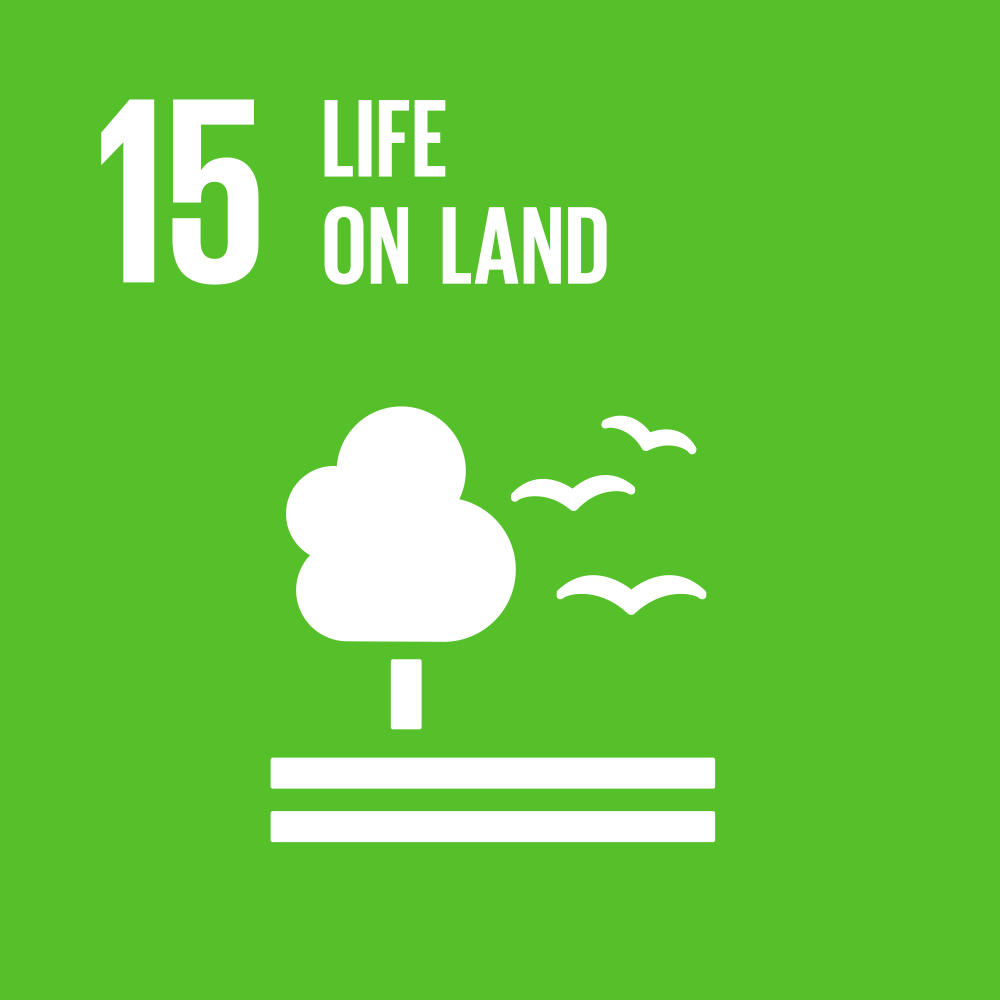Insect hotels: essential shelters for Biodiversity
- Javier Trespalacios

- Aug 5, 2020
- 5 min read
Updated: Aug 12
Urban and agricultural expansion has significantly reduced natural habitats, particularly affecting insects, which are pillars of ecological balance [1]. In response to this phenomenon, insect hotels—also known as shelters or insect houses—have emerged as effective solutions. These artificial structures mimic the cavities of trunks and bark, providing safe spaces for key species. Since the 1990s, they have been integrated into conservation programs in Europe to protect pollinators and enrich biodiversity in urban areas (Gaston et al., 2005; MacIvor & Packer, 2015).
Eva's Insect Hotel (Photo by Javier Trespalacios)
Biodiversity: a key concept
Biodiversity [2] is the fabric of life that enables the proper functioning of the planet by grouping the variety of organisms and their interactions within each ecosystem [3]. Although often perceived as insignificant, insects play a fundamental role in maintaining this balance, acting as the invisible architects of nature.
Insects: indispensable allies
These little allies perform several vital functions:
Pollinators: Approximately 75% of crops depend on insect pollination, such as bees, butterflies, and certain beetles, which facilitate the reproduction of many plant species (FAO, n.d.; Klein et al., 2007).
Decomposers: They feed on decaying organic matter, contributing to humus formation and recycling nutrients essential for soil fertility.
Biological Control: They help regulate populations of other species, thus avoiding ecological imbalances.
Food Chain Link: They provide essential food sources for birds, reptiles, amphibians, and mammals. Their disappearance could affect these species and disrupt ecosystems (Michoacana University of San Nicolás de Hidalgo, n.d.).
Producers of Economic Goods: They provide products such as honey, wax (produced by bees), lac (resin secretion from Laccifer lacca), and silk (from silkworms).
Building an insect hotel
To create an effective insect hotel, it is recommended to follow these guidelines:
Materials: Untreated wood, bamboo stalks, pine cones, and perforated bricks create suitable habitats.
Location: A south or southwest orientation to maximize sun exposure [4]. The shelter should be protected from wind and rain and placed between 30 cm and 1.5 m off the ground to facilitate insect access and protect them from predators.
Environment: Install it near food sources, such as flowering plants and herbs that attract pollinators (FAO, n.d.).
Eva's Insect Hotel (Photo by Javier Trespalacios)
Consequences of Insect Decline
The loss of habitats, coupled with the overuse of pesticides and herbicides, accelerates the decline of insects. According to the UN, 40% of pollinators are threatened with extinction (IPBES, 2016). This crisis affects all insects: more than 40% of their species are in decline, with a disappearance rate eight times higher than that of mammals, birds, or reptiles. Their global annual reduction is 2.5%, which could lead to extinction within a century (WWF, 2019).
In response to this situation, the UN declared May 20 as World Bee Day, an initiative aimed at raising awareness about the irreplaceable role of pollinators in ecosystems and food security (UN, 2019).
Insect Hotels and Sustainable Development Goals (SDGs)
This approach not only preserves biodiversity but also supports global sustainable development goals:
SDG 2 - Zero Hunger: Protecting insects that play a crucial role in ecosystems, serving as food for many species and producing essential food elements like honey.
SDG 15 - Life on Land: Safeguarding biodiversity by preserving key elements within an ecosystem.
SDG 2 and SDG 15
Conclusion: a collective effort
Community initiatives, such as insect hotel construction workshops, not only educate about the importance of these creatures in ecological balance but also strengthen collaboration among citizens, urban planners, and local administrations. A concrete example is the "Insect Hotel" project developed in the school garden of Casa Escuela Santiago Uno in Salamanca, Spain. Hotels were built with recycled materials, involving students and technicians in their design. This collective effort is essential for restoring and maintaining biodiversity, ensuring a harmonious coexistence between society and nature (UBU.ES, 2020).
"The extinction of one species jeopardizes the existence of many others, including our own..."
*****
Notes
[1] Ecological balance is defined as the stability achieved in an ecosystem, where interactions between organisms and their environment are maintained harmoniously, ensuring the continuity and sustainability of natural processes (United Nations Environment Programme, n.d.).
[2] Biodiversity, or biological diversity, refers to the variety of life forms on Earth, including species diversity, genetic variability within them, and the diversity of ecosystems they inhabit. Etymologically, the term comes from the Greek "bios" (life) and the Latin "diversitas" (variety). It was coined in 1985 by entomologist Edward O. Wilson during the National Forum on Biodiversity in Washington (United Nations, n.d.).
[3] An ecosystem is a community of living organisms interacting with each other and their physical environment, thus forming a functional unit.
[4] The south/southwest orientation of insect hotels is essential for regulating temperature and protecting resident species (Banaszak & Pawlikowski, 2003). This orientation maximizes sunlight, maintaining optimal conditions for pollinating insects and protecting them from cold winds and precipitation, especially in the northern hemisphere (Helden et al., 2012), where such weather typically comes from the north and northwest. Research in urban ecology and habitat conservation has shown that this specific orientation significantly improves the effectiveness of these artificial refuges.
References
Banaszak, J., & Pawlikowski, T. (2003). Nesting sites for solitary wasps and bees in urban areas. Journal of Insect Conservation.
FAO. (n.d.). Most of the world's crops rely on pollinators. Food and Agriculture Organization of the United Nations. Retrieved from https://www.fao.org/newsroom/story/Bee-ing-grateful-to-our-pollinators/en.
Gaston, K. J., Smith, R. M., Thompson, K., & Warren, P. H. (2005). Urban domestic gardens: experimental tests of methods for increasing biodiversity. Biodiversity & Conservation, 14(2), 395-413.
Helden, A. J., Stamp, G. S., & Alexander, K. N. A. (2012). The importance of walls and buildings as overwintering sites in an urban environment. Urban Ecosystems.
IPBES. (2016). Summary for policymakers of the assessment report of the Intergovernmental Science-Policy Platform on Biodiversity and Ecosystem Services on pollinators, pollination and food production.
Klein, A. M., Vaissière, B. E., Cane, J. H., Steffan-Dewenter, I., Cunningham, S. A., Kremen, C., & Tscharntke, T. (2007). Importance of pollinators in changing landscapes for world crops. Proceedings of the Royal Society B: Biological Sciences, 274(1608), 303-313.
MacIvor, J. S., & Packer, L. (2015). Citizen science reveals urban–rural differences in wild bee communities of eastern Canada. Urban Ecosystems, 18(2), 519-534.
United Nations. (n.d.). International Day for Biological Diversity. Retrieved from https://www.un.org/en/observances/biological-diversity-day.
UN. (2019). World Bee Day.
Sánchez-Bayo, F., & Wyckhuys, K. A. (2019). Worldwide decline of the entomofauna: A review of its drivers. Biological Conservation, 232, 8-27.
UBU.ES. (2020). Environmental workshop: Building an insect hotel. Retrieved from https://www.ubu.es/te-interesa/taller-ambiental-elaboracion-de-hotel-para-insectos-con-maider-dominguez.
United Nations Environment Programme. (n.d.). Ecosystems and biodiversity. Retrieved from https://www.unep.org/explore-topics/ecosystems-and-biodiversity.
Michoacana University of San Nicolás de Hidalgo. (n.d.). Importance of insects in the forest: protagonists and threats. Retrieved from https://www.sabermas.umich.mx/archivo/articulos/562-numero-63/1113-importancia-de-los-insectos-en-el-bosque-protagonistas-y-amenazas.html.
WWF. (2019). The insect crisis: a call to action.








If you're dealing with a wasp problem, wasp removal Kitchener by Pesticon is a lifesaver. Fast, safe, and professional—highly recommend their service!